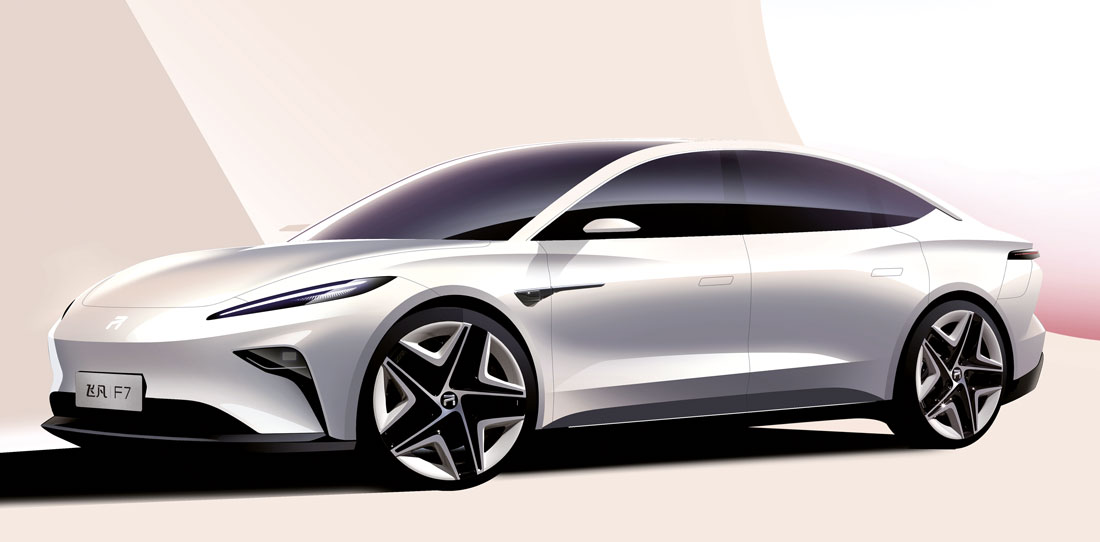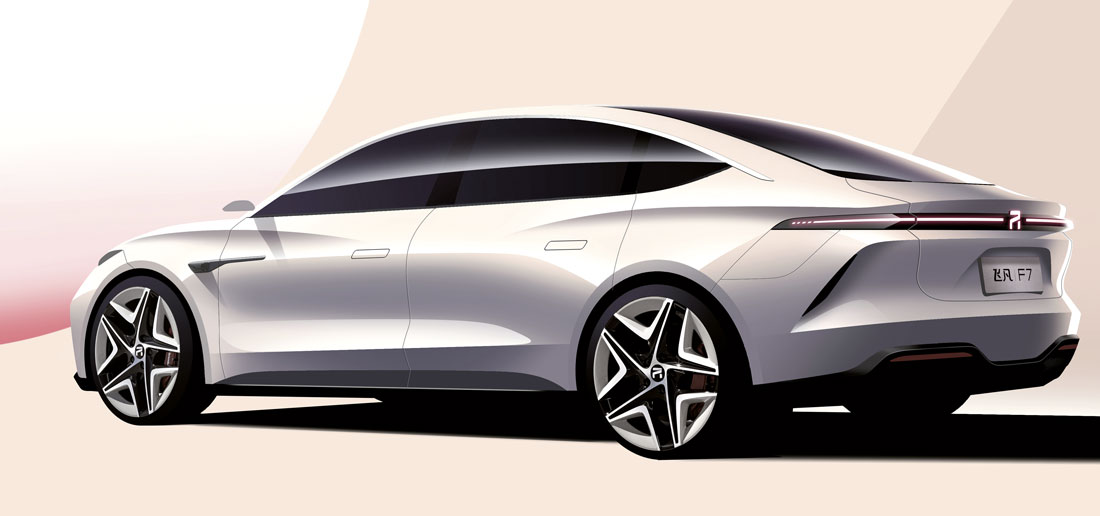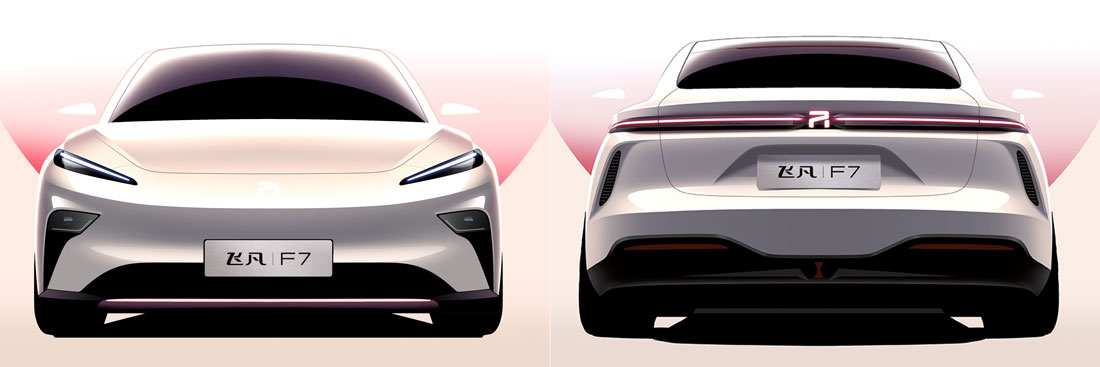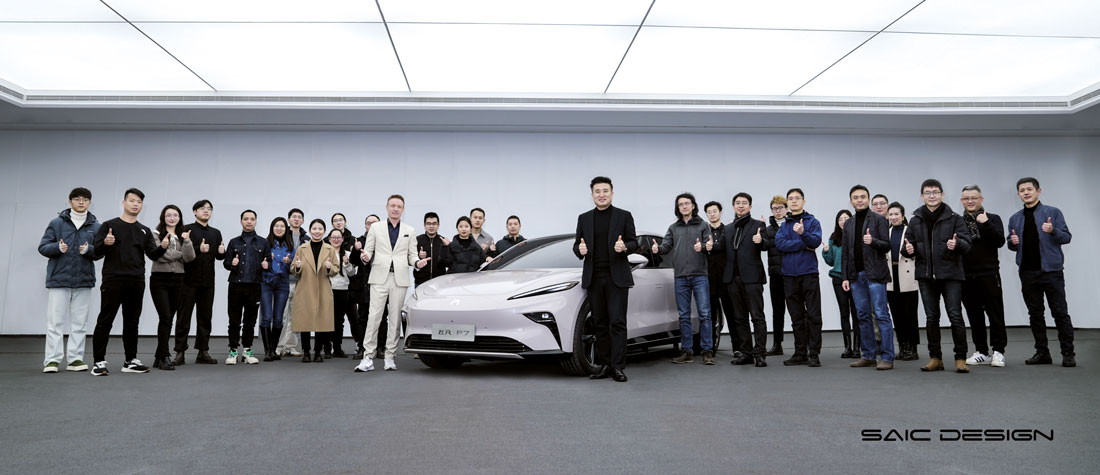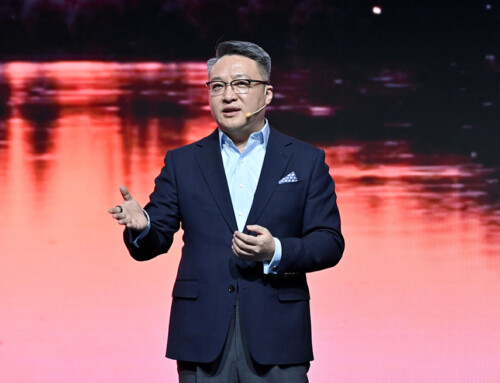It is always something of a challenge to achieve convergence between a concept car and the production model, but when it does happen, the validity of the project is confirmed right from the start. This is what happened to SAIC with the Rising Auto F7, a sleek, high-end saloon, previewed in 2019 by the Aura concept car at the Guangzhou Motor Show.
Target aerodynamics
Apart from creating a design that was sensual and attractive, the aim of the project was to achieve the best possible aerodynamics for the segment. A fundamental principle in automotive design that becomes crucial when we speak, as in the case of the F7, of a 100% electric model where every tiny improvement in Cx means a significant gain in range.
The “Momentum Line”
The design team led by Shao Jingfeng, Design President of SAIC Innovation Research and Development, has therefore worked extensively on forms, achieving a drag coefficient that is excellent for the category: 0.206. Credit for this is also due to the long ‘Momentum Line’, that defines the side of the car starting from the front and running all the way to the rear, adding dynamism and elegance to its function. Other small tricks contribute to reducing drag, such as the handles flush with the bodywork, the solid patterned wheels and a front end that points strongly downwards, adopting a solution that the SAIC style centre calls a ‘wind blade’.
Light design and safety
All lighting elements have been meticulously crafted. The daytime running light design is harmonious and simple, while the full-width headlamps, derived directly from the Aura concept car, visually enhance the proportions of the rear and hence the F7’s road presence. There are many safety devices hidden here and there in the bodywork, including 32 detection sensors, three radars and a camera.
Skin-friendly materials
The attention to detail evident in the F7’s exterior is reflected in the interior, which is super spacious. The saloon’s 3-metre wheelbase (compared with 5 metres in length, 1.9 metres in width and 1.4 metres in height) transforms the rear into a living room, while the design of the interior as a whole is defined by simple lines to help driver and passengers relax. Skin-friendly materials give the entire cabin a luxuriously comfortable feel.
Design and technology
The presence of technology also makes itself felt: the dashboard is equipped with three screens totalling 43 inches (like a TV set), while passengers in the second row can count on another 8-inch screen. Between design and technology those in search of performance have nothing to worry about. The F7 has a range of 666 kilometres guaranteed by a battery pack powered by two electric motors that in the four-wheel drive version reach an impressive 400 kilowatts of power (543 horsepower).
(Full article in A&D no. 260)

